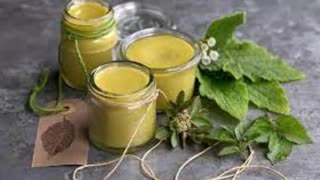Meadowsweet
https://asolitarypaganwitchesgrimoire.com/herbal-magick/meadowsweet/
Meadowsweet is a member of the rose family and can easily be found growing wild along streams and rivers, as well as damp woodlands. It is a high altitude plant that can grow as high as 3,300 feet. It is native to Europe and Asia and was successfully introduced and naturalized in North America. It has a tuberous root that is the key to its scientific name. The name meadowsweet is an Anglo Saxon name, which comes from the fact this herb was used to make mead, and drink made from fermented honey.
Another strewing herb, tossed on the floor in the 16th century to warm and scent the floors and keep infections at bay, this was a favorite of Queen Elizabeth the I who preferred it in her bedroom. Gerard, an early herbalist, believed it outranked all other strewing herbs because the scent was delightful and did not cause headaches by being over powering. It was a traditional plant of druids and was in the most sacred category along with mistletoe, watermint and vervain.
The sap contained in the branches of Meadowsweet contains a chemical called salicylic acid. Isolated in 1853 by an Italian professor, Bayer formulated acetylsalicylic acid in 1899, they called it aspirin after the old botanical name for Meadowsweet, Spirea ulmaria. The herb is considered much less harsh to the stomach than aspirin.
Meadowsweet is especially suited to headaches in which the person has a hot head and feels a pounding sensation in the head. Meadowsweet is cooling and it promotes circulation, which can relieve stagnant energy in the head. Besides having the ability to relieve pain, meadowsweet is also anti-inflammatory in nature. Taken daily as a tea or tincture it can help relieve chronic arthritic pain and inflammation. Stomach aches and acid reflux. My favorite herbs for stomach aches and nausea are ginger, peppermint and meadowsweet. Meadowsweet shines as an herb for stomach aches, nausea and poor digestion and is especially helpful for those who find herbs like ginger to be too warming. Meadowsweet removes stagnation (like when you eat a meal and it stays in your stomach too long) and relieves discomfort in the stomach.
To GrowThis hardy perennial grows 2 to 4 feet in height with a spread of 2 feet. Clusters of strong scented creamy-white flowers in mid-summer. The leaves are deeply veined and appear in groups of two to five. All meadowsweet variety are hardy in Zone 4.
The seed can be stratified, but is not required. To stratify the seed you need to to place them in a situation where extreme cold will break down the seed coat and end their period of dormancy. Placed in a plastic bag filled with damp sphagam moss or a damp paper towel for a couple of weeks usually does the trick. If in a hurry, run the seeds over a nail file to break the seed coat before planting.
Sow prepared seed or plug trays in the autumn. Cover lightly with soil and winter outside under glass (a cold frame would work perfectly. Check from time to time and water as needed when dry. Germination should take place in the spring. When the seedlings are large enough to handle, plant out 12 inches apart into a prepared location.
You can also propagate by division. The golden and variegate styles must be propagated by division. In the fall, dig up established plants and tease the plantlets apart; they separate easily. Replant in a prepared site or place in pots. A soil of bark, peat and potting soil works perfectly.The plant prefers sun and semi shade and a moisture retaining soil. If your soil drains well, you will need to add rotten manure or vegetative compost and leaf mold and plant in a more shaded area. Once a plant is established you will need to lift and divide it every 3 to 4 years in the fall to keep it vibrant.
To Use
Gather young leaves for fresh or dry use before slower appear in mid-summer. Pick flowers just as they open and use fresh or dry.
Meadowsweet leaves and flowers can be made into an herbal vinegar that is sweet and lovely for salad dressings. You can also make fritters with the flowers or use them to flavor mead and beer or to make wine.
The whole plant is a traditional remedy for an acidic stomach. The fresh root is used in homeopathic preparations and is effective on its own in the treatment of diarrhea. The flowers, when made into a tea are a comfort to flu victims.
A black dye can be obtained from the roots when used with a copper mordant, while the flowers can produce a greenish-yellow dye and the leaves and stems make a blue dye. One can also use the dried leaves and flowers in potpourri.A tea made with leaves and flowers will help the body of excess fluid and alleviate heartburn. It is also a treatment for feverish colds and mild diarrhea. It even works as a mild sedative and painkiller. Use one teaspoonful of dried flowers and/or leaf blend to each cup boiling water. Infuse for 10 minutes and drink warm. Add honey and cinnamon to improve taste and soothe sore throats
To make a meadowsweet beer; boil 2 ounces each of meadowsweet, betony, raspberry leaves and agrimony in two gallons of water for about 15 minutes. Strain and add 2 pounds of white sugar, stirring to dissolve. Bottle when nearly cool.
Add the leaves to soup for a unique and interesting flavor. You can add the flowers to jams and stewed fruit which lends a slight almond flavor.
-
 9:21
9:21
asolitarypagan.com
1 year agoMaking Herbal Salves
1.78K -
 5:42:36
5:42:36
FreshandFit
23 hours agoLive X Censorship For Opposing Immigration?!
233K113 -
 1:08:16
1:08:16
Tactical Advisor
19 hours agoNEW Budget Glocks | Vault Room Live Stream 011
120K9 -
 16:30
16:30
SNEAKO
1 day agoNO FRIENDS IN THE INDUSTRY.
156K72 -
 6:19
6:19
BlackDiamondGunsandGear
1 day agoHow Fat Guys can Appendix Carry
109K12 -
 6:58
6:58
Gun Owners Of America
1 day ago2024 Was Huge For Gun Rights, Here's Our Top 10 Wins!
87.8K8 -
 15:50
15:50
Degenerate Jay
1 day ago $3.22 earnedJames Bond Is Being Ruined By Amazon? Make Him A Black Gay Woman?
67.2K15 -
 15:18
15:18
DeVory Darkins
1 day ago $27.00 earnedTrump Drops NIGHTMARE Warning on Joe Biden
81.9K118 -
 36:13
36:13
The Why Files
1 month agoAlien Implants Vol. 1: Devil’s Den UFO Encounter: What Was Found Inside Terry Lovelace?
98K44 -
 9:03
9:03
Alabama Arsenal
2 days ago $1.28 earnedAAC HUB 2K | Modern Features, Iconic Classic Looks
29.1K1

0 Comments